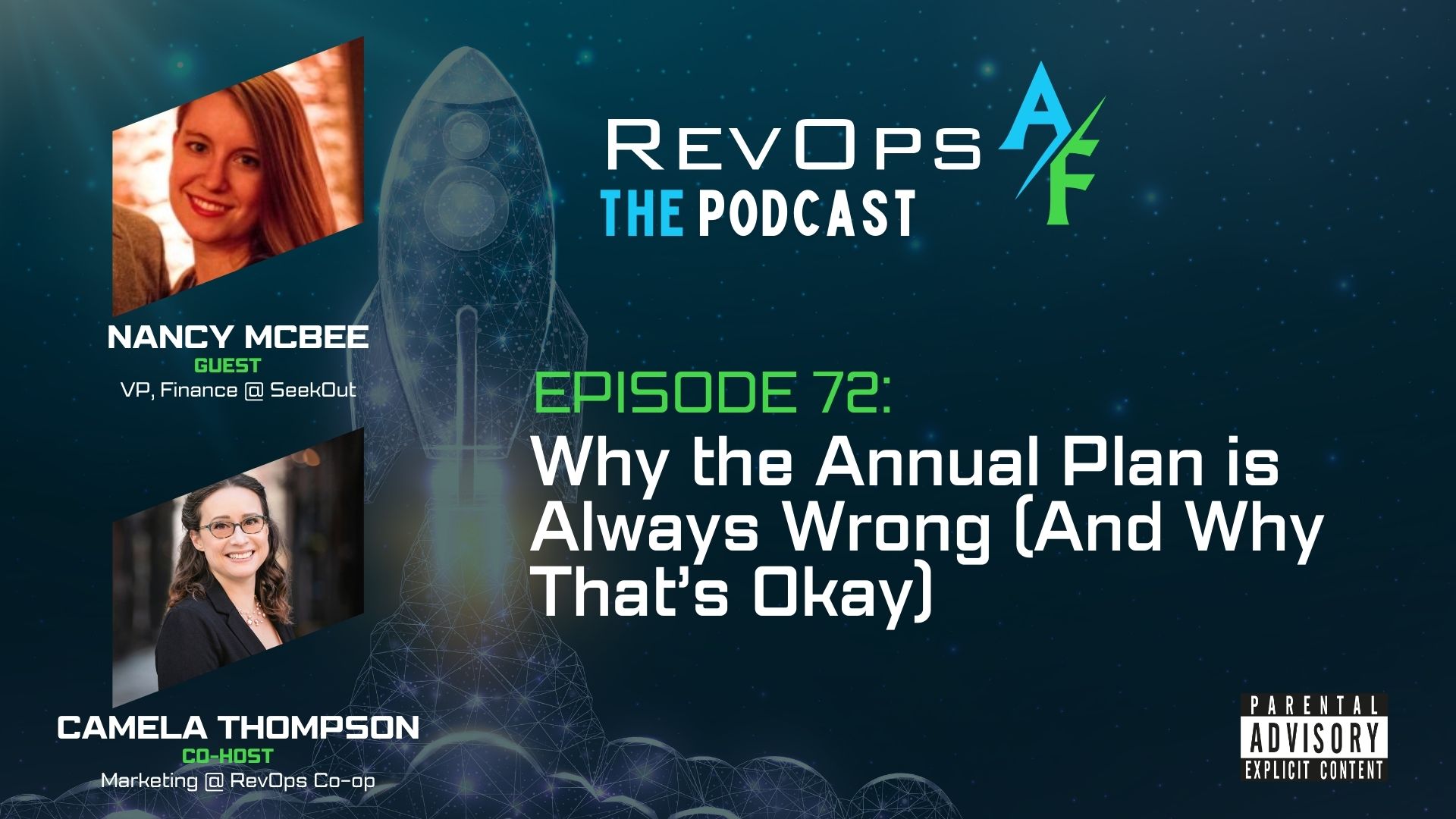
Episode 72: Why the Annual Plan is Always Wrong (And Why That’s Okay)
Why annual plans are always wrong and how to bridge the gap between finance and RevOps. This VP of Finance shares strategies for better budget planning.
Welcome to the latest episode of the RevOpsAF podcast! In this episode of the RevOps AF podcast, host Matt Volm sits down with Sandy Robinson, SVP of Revenue Operations and Enablement at Patra Corporation. With years of experience in sales and RevOps, Sandy has been instrumental in developing Patra’s first RevOps function. From startups to established companies, Sandy shares her tips for creating scalable, streamlined processes to accelerate revenue growth.
According to Sandy, the purpose of RevOps is to drive revenue faster through scalable processes that enable growth. This includes everything that impacts the customer buying journey and your company’s ability, or inability, to bring revenue in the door.
"RevOps needs to focus on every aspect of the customer buying journey." - Sandy Robinson
Jump to clip to hear Sandy explain how she defines RevOps
Early-stage companies have the benefit of building new operational models that align departments. More established companies have been running siloed departments for a long time. Sales has SalesOps, marketing has MarketingOps, and customer success has CS Ops—moving to a unifying model can be hard.
Priorities are different depending on the size of the company. Startups will focus on marketing ops building the top of the funnel followed by creating BDR and SDR compensation plans. Established companies must prioritize streamlining and aligning pre-existing siloed functions like sales and marketing operations. Sandy provides a roadmap for adjusting strategies based on whether you're starting from scratch or working within established frameworks.
Jump to clip to learn how Sandy started building RevOps at Patra by bringing in a systems architect
Not every company has enablement under revenue operations but when you think about functional responsibility, whether or not enablement reports to the RevOps leader, it's critical to have a partnership.
Sandy highlights the inclusion of enablement into RevOps at Patra. She has been responsible for onboarding new sales reps and implementing new methodologies, such as MEDDPICC, to ensure the team is aligned with the new processes.
“I'm certified to teach MEDDPICC so I do a lot of the training and I put together an onboarding plan.” - Sandy Robinson
Jump to clip for details on how Sandy enables revenue teams using micro-learning
Sandy warns against taking a technology-first approach when solving problems in RevOps. Instead, she recommends focusing on identifying the problem and defining the process before looking for technological solutions. Jumping straight into new tools can create unnecessary complexity without addressing core issues.
Jump to clip for advice on avoiding shiny new technology when you have new budget
Sandy explains that one of the key responsibilities of RevOps is to bridge silos between departments. When you have disparate systems, it’s going to create more problems down the road, even if you can’t see them right now. By aligning people, processes, and technology, RevOps can ensure seamless collaboration across teams, which ultimately improves the customer experience.
“I get outside of my swim lane and try to build relationships and talk to people. I communicate that nobody's trying to stop you or control whatever fiefdom you're trying to build. But we want to make sure that we're able to communicate and work together.” - Sandy Robinson
Jump to clip for tips on involving GTM stakeholders in discussions when considering process changes
Our average member has more than 5 years of RevOps experience. That means you’ll have real-time access to seasoned professionals. All we ask is that you’re generous with your knowledge in return.